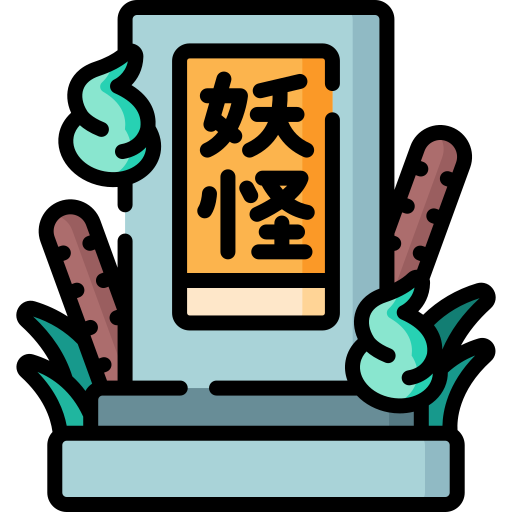Have you ever found yourself struggling to express your thoughts accurately in Japanese? You’re not alone. One of the most common challenges for Japanese learners is understanding when to use 思う (omou) versus 考える (kangaeru) – two verbs that both translate to “think” in English. Mastering these subtle distinctions is crucial to think Japanese naturally and communicate like a native speaker.
Want to start learning Japanese right away?
Access our Free Study Guides with grammar explanations, vocabulary lists, and study tips. All at no cost.
The Heart and Mind of Japanese Thinking
When you begin thinking in Japanese rather than translating from your native language, you’ll notice that Japanese makes a fascinating distinction between different types of thinking. This distinction reveals a lot about Japanese culture and how the language conceptualizes thought processes.
思う (omou): Think with your heart – spontaneous, emotional, intuitive 考える (kangaeru): Think with your head – logical, analytical, deliberate
Understanding this fundamental difference is your first step toward authentic Japanese expression. Let’s explore how Japanese speakers decide which verb to use in various situations.
How to Think Japanese: The Two Minds of Thought
Emotional Thinking with 思う (Omou)
When you’re thinking in Japanese with 思う, you’re expressing thoughts that arise naturally and spontaneously, almost like feelings. These thoughts come from your emotional core rather than through logical analysis.
Think of 思う as the Japanese equivalent of:
- “I feel like…”
- “It seems to me…”
- “My impression is…”
Example:
日本語は美しいと思います。
Nihongo wa utsukushii to omoimasu.
I think Japanese is beautiful. (Based on my subjective impression)
Analytical Thinking with 考える (Kangaeru)
When using 考える for thinking in Japanese, you’re engaging in a more deliberate, analytical process. This is active thinking with a purpose or goal in mind.
Think of 考える as the Japanese equivalent of:
- “I’m considering…”
- “I’m analyzing…”
- “I’m trying to figure out…”
Example:
問題の解決策を考えています。
Mondai no kaiketsu-saku wo kangaete imasu.
I’m thinking about a solution to the problem. (Through logical analysis)
When to Use 思う vs 考える in Daily Conversations
Active Thinking Situations
When you’re actively focusing your thoughts on something specific, the way you think Japanese matters significantly.
With 思う (Heart-Thinking):
When you use 思う with an object (marked by を), you’re indicating that you care about or feel emotional about that object.
家族のことを思う
Kazoku no koto wo omou
Thinking about my family (with emotional concern)

With 考える (Head-Thinking):
When using 考える with an object, you’re indicating that you’re analyzing or processing information about that object.
将来の計画を考える
Shōrai no keikaku wo kangaeru
Thinking about future plans (analyzing possibilities)
For Japanese Problem-Solving and Decision-Making
For problem-solving and decision-making, 考える is almost always the appropriate choice when thinking in Japanese. This makes sense because these activities involve logical processes.
レストランでメニューを見ながら:「もう少し考えます。」
Resutoran de menyū wo minagara: “Mō sukoshi kangaemasu.”
While looking at a menu in a restaurant: “I’ll think about it a little more.”
Using 思います in this context would sound strange to Japanese ears because choosing a meal is a decision-making process, not an emotional reaction.
How Do You Think About Japan? Expressing Opinions in Japanese
When sharing your thoughts about Japan or any other topic, choosing the right thinking verb significantly impacts how your opinion is perceived.
Casual Opinions with 思う
For everyday, personal opinions based on impression or feeling:
日本の文化は興味深いと思います。
Nihon no bunka wa kyōmibukai to omoimasu.
I think Japanese culture is interesting. (Based on my impression)
This is perfect for casual conversations where you’re sharing a personal impression rather than a researched conclusion.
Formal Opinions with 考える
For well-reasoned opinions in formal settings or academic writing:
日本の経済成長には新しい政策が必要だと考えます。
Nihon no keizai seichō ni wa atarashii seisaku ga hitsuyō da to kangaemasu.
I think new policies are necessary for Japan’s economic growth. (Based on analysis)
As noted in our guide on Japanese Particles Explained, the quotative particle と plays a crucial role in expressing opinions with both 思う and 考える.
Tips for Thinking in Japanese for Studying
Learning to think Japanese directly, rather than translating from your native language, is crucial for fluency. Here are some effective strategies:
- Practice inner monologues in Japanese – Try narrating your daily activities using simple Japanese sentences
- Label objects in your environment in Japanese – This creates direct associations between objects and Japanese words
- Study common thought patterns – Learn phrases Japanese people typically use when expressing opinions or reactions
- Use appropriate context – Remember that 思う is more common in casual speech, while 考える often appears in formal or written contexts
- Practice with authentic materials – Watch how native speakers use these verbs in anime, dramas, or beautiful Japanese expressions
Love Japan? Stay in the Loop!
Hi, I’m Jesse! Join 100+ learners and get my best Japanese learning tips straight to your inbox.
Common Contexts for 思う and 考える
Predictions
When making predictions about future events:
With 思う (intuitive feeling):
明日は雨が降ると思います。
Ashita wa ame ga furu to omoimasu.
I think it will rain tomorrow. (Based on feeling or casual observation)
With 考える (analytical conclusion):
経済データを分析した結果、来年は景気が良くなると考えています。
Keizai dēta wo bunseki shita kekka, rainen wa keiki ga yoku naru to kangaete imasu.
Based on analyzing economic data, I think the economy will improve next year.
Making Judgments
When making value judgments:
With 思う (personal belief):
この映画は面白いと思います。
Kono eiga wa omoshiroi to omoimasu.
I think this movie is interesting. (Personal opinion)
With 考える (reasoned position):
様々な事例を検討した結果、この方法が最適だと考えます。
Samazama na jirei wo kentō shita kekka, kono hōhō ga saiteki da to kangaemasu.
After considering various cases, I think this method is optimal.
Think Japanese: Quick Reference Guide
| Context | 思う (Omou) | 考える (Kangaeru) |
|---|---|---|
| Source | Heart/emotion | Head/logic |
| Speed | Spontaneous | Deliberate |
| Purpose | Express feelings | Reach conclusions |
| Formality | Casual, everyday | Formal, academic |
| Common uses | Opinions, reactions, predictions | Problem-solving, analysis, research |
Q&A: Common Questions About Thinking in Japanese
Q: Can 思う and 考える be used interchangeably?
A: No, they cannot always be used interchangeably. While there is some overlap, 思う is for emotional, intuitive thinking, while 考える is for logical, analytical thinking.
Q: How do I know which verb to use when expressing an opinion?
A: Use 思う for casual, personal opinions based on feelings or impressions. Use 考える for formal opinions backed by logical reasoning or evidence.
Q: Do Japanese people really distinguish between these two types of thinking?
A: Yes, native Japanese speakers intuitively understand the difference, though they might find it difficult to explain precisely. The distinction is deeply embedded in the language and culture.

Q: How can I practice using these verbs correctly?
A: Listen carefully to native speakers, study example sentences, and practice using both verbs in appropriate contexts. Consider joining a Japanese online community for feedback from native speakers.
Master Japanese Thinking for Authentic Communication
Learning to think Japanese means understanding these subtle distinctions that aren’t present in English. By mastering the difference between 思う and 考える, you’ll express yourself more naturally and accurately in Japanese.
For more in-depth Japanese learning resources, check out our free guides that will help you navigate other challenging aspects of the language, such as Japanese honorifics.
Remember: The key to thinking in Japanese for studying effectively is immersion and practice. Don’t just memorize vocabulary and grammar—understand the cultural context behind the language choices.
Are you ready to start thinking like a native Japanese speaker? Begin by incorporating these verbs correctly in your daily Japanese practice!
Connect with Fellow Japanese Learners!
Ask questions, get study tips, and take part in weekly challenges. Join a community of motivated learners exploring both the language and culture of Japan!




